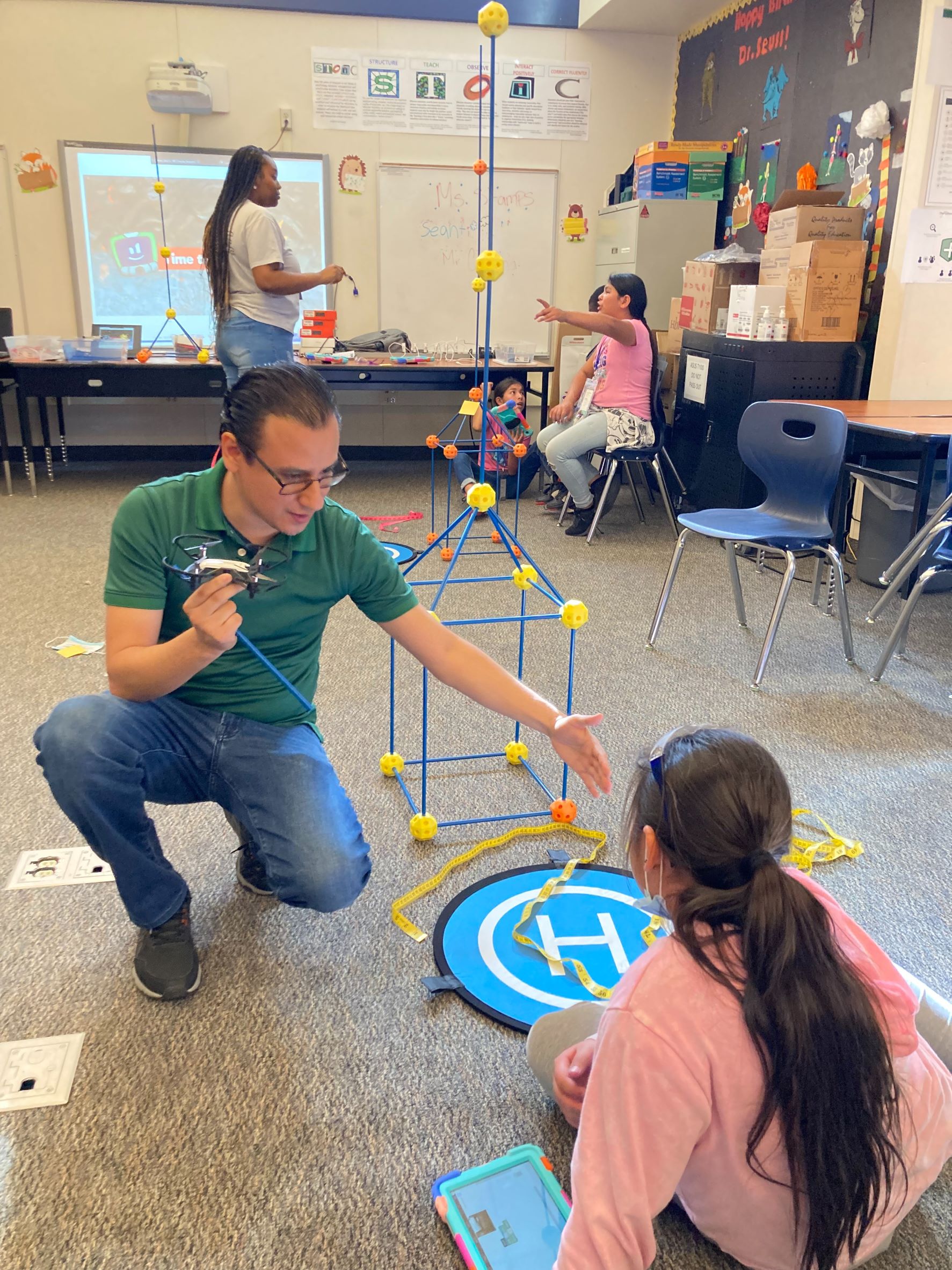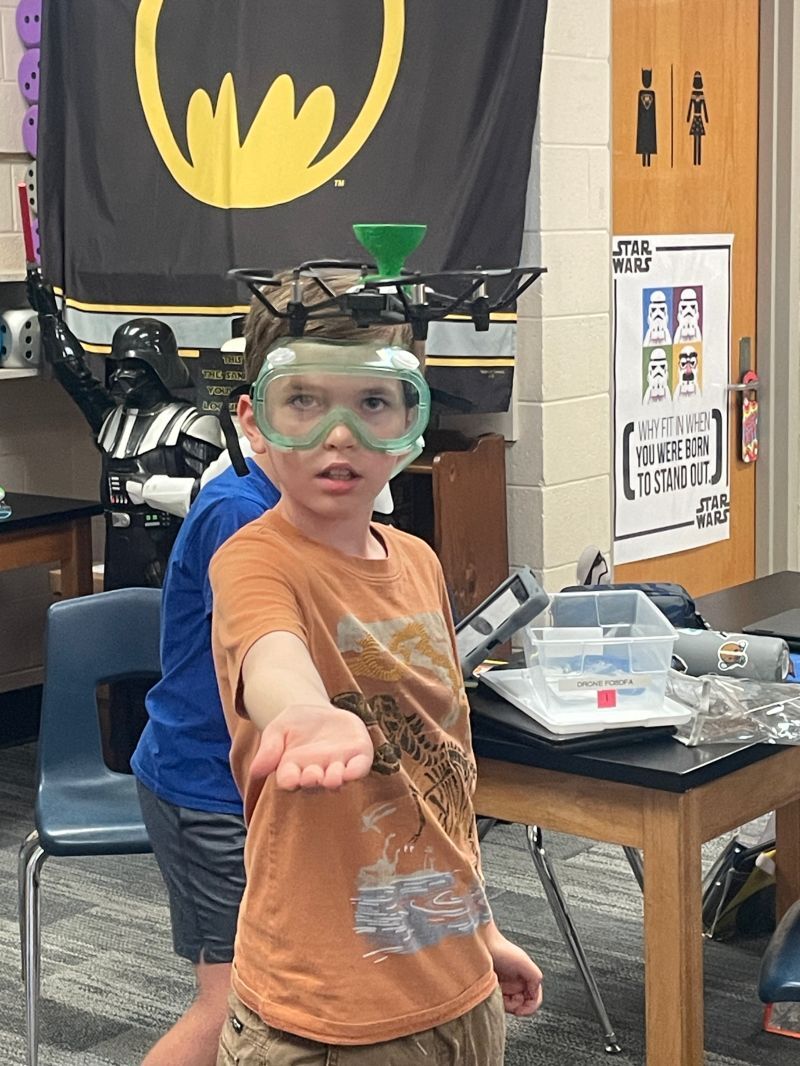Have you ever thought about using drones in your elementary school STEM classroom?
As drones become more common in many industries, it’s important to teach young students about this technology and the possibilities it offers. Drones aren’t just fun and interesting for students; they can also be used to teach a wide range of STEM topics in a hands-on, interactive way. In this blog post, we’ll talk about how drones can be used to teach science, technology, engineering, and math and give examples of hands-on activities for each of these subjects. We hope that this post makes you think about adding drone technology to your STEM curriculum and gets your students excited about the possibilities of this technology.
Drones and Science
Science principles like flight, gravity, and air resistance may be taught to kids using drones. To show how different wing sizes and shapes affect an aircraft’s lift and drag, for instance, you may utilize a drone. Students can also create their own model airplanes or drones and test out several designs to discover which one flies the best before choosing one to build.
One useful activity you could do with your students is to help them design and build a paper airplane drone. Have them try out different shapes and sizes of wings to see which design flies the farthest or stays in the air the longest. You can also show your students how to use a drone to find out about things like humidity and temperature in the environment or about weather patterns.
There are many advantages to using drones in science instruction. Students may find the subject matter to be more meaningful and applicable if they can understand how scientific principles are used in everyday life. The design and testing of the pupils’ own drones or model airplanes also promotes critical thinking and problem-solving abilities. Drones can be used to show kids what STEM (science, technology, engineering, and math) occupations are like, which can pique their interest in these topics and motivate them to pursue further education and employment prospects in these industries.
Drones and Technology
Incorporating drones into the elementary school classroom can also provide an opportunity for students to learn about technology and coding. There are various drone models available that come with built-in coding features, allowing students to program their drones to perform specific tasks or follow a set of predetermined commands.
One hands-on activity you can try with your students is to have them program a drone to fly through an obstacle course. You can set up a series of cones or other markers for the drone to navigate through, and have students write a code to direct the drone through the course. You can also have students work in teams to design and build their own drones using kits or materials such as cardboard, plastic cups, and rubber bands.
Using drones to teach technology concepts has many benefits. It helps students understand how technology works and how it can be used to solve problems. It also introduces them to coding and programming, which can be valuable skills in today’s increasingly digital world. Drones can also be used to expose students to careers in technology, engineering, and other STEM fields, which can help spark their interest in these subjects and inspire them to pursue further education and career opportunities in these areas.
Drones and Engineering
Drones can also be a useful tool for teaching students about engineering principles such as design, problem-solving, and prototyping. For example, you can have students design and build their own drones using kits or materials such as cardboard, plastic cups, and rubber bands. This activity can help students understand the engineering design process and the importance of testing and iterating on their designs.
Another hands-on activity you can try with your students is to have them design and build a payload delivery system for a drone. Have them come up with a problem that a drone could solve, such as delivering supplies to a remote location, and then have them design and build a system to carry and release the payload. You can also have students design and build their own drones from scratch, using materials such as foam board and hot glue.
Using drones to teach engineering concepts has many benefits. It allows students to apply engineering principles to real-world problems and see the practical application of these principles. It also encourages critical thinking and problem-solving skills as students design and build their own drones or payload delivery systems. Drones can also be used to expose students to careers in engineering and other STEM fields, which can help spark their interest in these subjects and inspire them to pursue further education and career opportunities in these areas.
Drones and Mathematics
Drones are also a great way to teach math concepts like measurement, geometry, and spatial reasoning to students. For example, you can have students measure and calculate the dimensions of a drone or the distance it travels. You can also have students use geometry to design and build their own drones, using shapes such as triangles and circles to create a stable and aerodynamic structure.
One hands-on activity you can try with your students is to have them design and build a drone that can follow a set of predetermined coordinates. Have them use coordinates to plot a course for the drone to follow, and then program the drone to follow that course. You can also have students use a drone to collect data on real-world phenomena, such as the height of trees or the distance between objects, and then have them use math to analyze and interpret that data.
Using drones to teach math concepts has many benefits. It allows students to see the practical application of math concepts and helps make the material more meaningful and relevant to them. It also helps students learn how to think critically and solve problems by having them design and build their own drones or figure out what data a drone has collected. Drones can also be used to show students careers in science, technology, engineering, and math (STEM) fields. This can spark their interest in these subjects and encourage them to get more education and work in these fields.
Final Thoughts
In conclusion, drones can be a great way to teach kids in elementary school about science, technology, engineering, and math. They provide a hands-on, interactive way for students to learn and can help make the material more meaningful and relevant to them. Incorporating drones into your STEM curriculum can also encourage critical thinking and problem-solving skills and expose students to careers in STEM fields.
If you’re interested in using drones in your classroom, there are many resources available to help you get started. We encourage you to join the Drone Legends community of industry experts and get started today!




